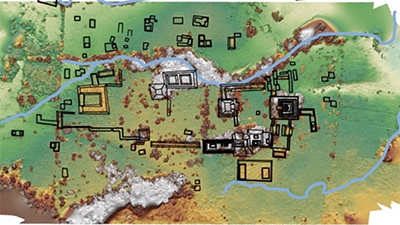The capital of a long-lost Maya kingdom has been hiding in plain sight, relatively, on a cattle ranch in Mexico.
The site is Lacanja Tzeltal. It is now in Chiapas, in the southeastern part of Mexico. The site, which was settled in 750 B.C, was occupied for a millennium and was the capital city of the ancient kingdom of Sak Tz'i'.
Archaeologists know this because the owner of a Chiapas cattle ranch found an ancient stone tablet on his property and told a friend, who passed on the information to an archaeology student who was studying in the area. The student, Whittaker Schroder, was in 2014 a graduate student at Brandeis University. He and his friend, Harvard graduate student Jeffrey Dobereiner, convinced professors at Brandeis University (Charles Golden) and Brown University (Andrew Scherer) to support an excavation where the tablet was found. A few years later, with all necessary permissions granted and approved, they began digging.

The workers had to cordon off the dig site because it was in the middle of a working cattle ranch. They found the remnants of a 45-foot-tall pyramid, a 1.5-acre plaza of monuments, and several sculptures. Inscribed on some stones are still legible carvings that depict ancient gods and describe ancient disasters.
Excavation is slated to continue in June, using LiDAR (Light Detection and Ranging), a laser-based method of determining what might lie buried beneath thick layers of jungle or earth.
Archaeologists found reference to Sak Tz'i' at another site in 1994. Several sculptures around the world also mention the forgotten capital, which occupied land that is now on both sides of the Guatemala-Mexico border.